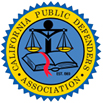DEFERRED ENTRY OF JUDGMENT DRUG DIVERSION – PENAL CODE 1000
Overview of P.C. 1000
Penal Code Section 1000 allows for a defendant who is accused of drug charges in California to suspend his court proceedings in order to complete a drug treatment program. After the defendant successfully completes the program, the judge will dismiss his criminal charge.
Eligibility for P.C. 1000
In order to qualify for a deferred entry of judgment, a defendant must satisfy the eligibility requirements listed in Penal Code 1000. Specifically, the defendant must have committed one of the qualifying drug offenses and also must satisfy specific requirements detailed in this section.
Qualifying Drug Offenses
- Health and Safety Code Section 11350;
- Health and Safety Code Section 11357;
- Health and Safety Code Section 11358 (if the marijuana planted, cultivated, harvested, dried, or processed is for personal use);
- Health and Safety Code Section 11364;
- Health and Safety Code Section 11365;
- Health and Safety Code Section 11368 (if the narcotic drug was secured by a fictitious prescription and is for the personal use of the defendant and was not sold or furnished to another);
- Health and Safety Code Section 11377;
- Health and Safety Code Section 11550;
- Vehicle Code Section 23222(b);
- Penal Code Section 381;
- Penal Code Section 647(f) (if for being under the influence of a controlled substance);
- Penal Code Section 653(f)(d) (if the solicitation was for acts directed to personal use only);
- Business and Professions Code Section 4060.
Other requirements
In addition to having committed one of the qualifying drug offenses, the defendant must also satisfy these requirements:
- The defendant must have no prior drug-related charges;
- The crime the defendant is being charged for didn’t involve violence or threat of violence;
- The defendant must have been using the drugs related to the charged offense for personal use and/or possession, and not for sale and/or distribution;
- There isn’t any evidence of a violation relating to narcotics or restricted dangerous drugs other than the violation the defendant was charged for;
- The defendant’s record doesn’t show that probation or parole has ever been revoked without being completed afterwards;
- The defendant’s record doesn’t show that she has successfully completed or been terminated from a diversion or deferred entry of judgment within 5 years prior to the alleged commission of the charged offense; and
- The defendant has no prior felony conviction within 5 years prior to the alleged commission of the charged offense.
Other Information Regarding DEJ
If the defendant satisfies the above-listed requirements and the judge decides that a deferred entry of judgment would be appropriate, then the defendant must plead guilty to the charged offense. However, as long as the defendant successfully completes the program, the court must dismiss this charge. After this occurs, “the arrest upon which the judgment was deferred shall be deemed to have never occurred” for most purposes. (P.C. 1000.4(a)).
Drug Treatment Program Information
The presiding judge determines what type of drug treatment program the defendant should enter. In making this determination, the judge can request that the court’s local probation department conduct an investigation to determine what type of treatment would be best for the defendant. The probation department will consider factors such as the defendant’s age, employment/service records, education, community and family ties, and any prior drug history.
PROPOSITION 36
Overview of Prop 36
Under Proposition 36, qualifying offenders who are convicted of nonviolent drug possession offenses are able to undergo drug treatment instead of incarceration. More specifically, Prop 36 mandates that first and second-time defendants who have been convicted of a nonviolent drug possession charge must receive up to 12 months of drug treatment instead of incarceration.
Eligibility Under Prop 36
As mentioned above, in order to qualify for drug diversion under Prop 36, the defendant must be convicted of a nonviolent drug possession offense. Generally, “nonviolent drug possession offense” is used to mean:
- The unlawful personal use, possession for personal use, or transportation for personal use of any controlled substance identified in Health and Safety Code Sections 11054, 11055, 11056, 11057, or 11058; or
- Being under the influence of a controlled substance in violation of Health and Safety Code Section 11550.
The drugs in question include (but are not limited to): cocaine, ecstasy, marijuana, peyote, heroin, methamphetamines, and certain prescription drugs such as codeine or Vicodin.
Qualifying Nonviolent Drug Possession Offenses
Common nonviolent drug possession offenses that qualify under Prop 36 include, but are not limited to:
- Health and Safety Code Sections 11377 and 11350 (Possession of a Controlled Substance) and
- Health and Safety Code Section 11550 (Being Under the Influence of a Controlled Substance).
Non-Qualifying Offenses
The following offenses do not qualify as nonviolent drug possession offenses under Prop 36:
- Health and Safety Code Section 11351 – Possession of a Controlled Substance for Sale;
- Health and Safety Code Section 11352 – Selling/Transporting Controlled Substances (unless the conviction is only for transporting the drugs for personal use);
- Health and Safety Code Section 11358 – Cultivating Marijuana;
- Health and Safety Code Section 11359 – Possession of Marijuana for Purpose of Sale;
- Health and Safety Code Section 11360 – Selling/Transporting Marijuana (unless the conviction is only for transporting marijuana for personal use);
- Health and Safety Code Section 11368 – Forging/Presenting a Forged Prescription to Obtain Drugs;
- Health and Safety Code Section 11370.1(a) – Possession of a Controlled Substance while Armed with a Loaded, Operable Firearm;
- Health and Safety Code Section 11378 – Possession of Methamphetamines for Sale; and
- Health and Safety Code Section 11379 – Selling/Transporting Methamphetamine.
Other Disqualifying Factors
Even if the convicted crime qualifies as a nonviolent drug possession offense, certain factors may still disqualify the defendant from being eligible under Prop 36:
- Prior “Strike” Convictions
If the defendant was previously convicted of one or more violent or serious felonies that qualify as “strike” felonies under California’s Three Strikes Law, she will be ineligible under Prop 36 unless she fulfills the following requirements:
- In the past 5 years, the defendant has not been imprisoned, AND
- In the past 5 years, the defendant has not committed an offense that resulted in either: a felony conviction (other than a nonviolent drug possession offense), or a misdemeanor conviction involving physical injury or the threat of physical injury to another.
- Simultaneous Conviction with Non-Drug-Related Crime
A defendant will be ineligible for Prop 36 sentencing if, in addition to the qualifying nonviolent drug possession offense, he was also simultaneously convicted of either: a misdemeanor that is “not related to the use of drugs” or a felony.[1]
- Armed with Deadly Weapon
The defendant will be ineligible under Prop 36 if she was armed with a firearm or other deadly weapon at the time that she committed the nonviolent drug possession offense.
- Refusal
The defendant will also be ineligible if he refused drug treatment as a condition of his probation.
- Previous Participation
If the defendant has two other convictions for nonviolent drug possession offenses and she was sentenced under Prop 36 for both offenses and the judge believes that she would not benefit from further drug treatment, then she will be ineligible for Prop 36 sentencing, and she will also be required to serve a minimum of 30 days in jail.
Other Information Regarding Prop 36 Sentencing
In order to invoke Prop 36 sentencing, the defendant must do one of the following three things:
- Plead guilty or “no contest” to a nonviolent drug possession charge,
- Be convicted of a nonviolent drug possession charge by a bench or jury trial (notably, Prop 36 allows the defendant to fight his case and still be able to invoke Prop 36 sentencing instead of being incarcerated if he is found to be guilty), or
- Commit a nonviolent drug possession charge while on parole or violate a drug-related term of parole.
After the defendant invokes Prop 36 sentencing, the judge will place the defendant on probation, and will make successful completion of a drug treatment program one of the terms of the defendant’s probation. As long as the defendant successfully completes the program and also obeys the other terms of probation, the court is not allowed to sentence the defendant to jail/prison time.
Finally, after completing the drug program, the defendant may then petition the court to dismiss her conviction.
Drug Treatment Program Information
Under Prop 36, the defendant must receive drug treatment through a court-approved program such as:
- Drug education classes;
- Outpatient services or residential treatment;
- Detoxification services or narcotic replacement therapy; and/or
- Aftercare services.
Notably, drug rehabilitation services that are offered in prison or jail do not qualify as court-approved programs under Prop 36.
DRUG COURT
Overview of California’s Drug Court
During the 1990’s, California introduced Drug Court, a new program that was designed as an alternative to traditional prosecution for nonviolent drug offenders. This program aims to rehabilitate nonviolent drug offenders through treatment programs as opposed to prison/jail-time.
The main goals of the Drug Court program include:
- Reducing drug usage and recidivism (tendency to reoffend);
- Providing court supervised treatment;
- Integrating drug treatment with other rehabilitation services to promote long-term recovery and reduce social costs;
- Reducing the number of children in the Child Welfare System; and
- Accessing federal and state support for local drug courts.
Common Forms of Drug Court
Drug Court can be informal and flexible, and courts often have a certain amount of discretion in deciding eligibility. That being said, there are common types and models of drug courts in California.
Common Models of Drug Courts
- Pre-Plea Models: These allow for a stay of prosecution for the drug possession offenders as long as they participate in a court-supervised treatment. After successfully completing the program, the offender is discharged without a criminal record. Failure to complete the program will lead to filing of charges and adjudication.
- Post-Plea Models: These require a defendant to plead guilty before entering the treatment. Treatment can take anywhere from 9 months to 3 years, and upon completing treatment, the offender’s charges are dismissed. Failure to complete the program will lead to the sentencing phase of adjudication.
- Post-Adjudication Models: These allow repeat offenders to enter treatment between their conviction and serving their sentence. Successfully completing the program results in the offenders being able to serve their sentence in treatment instead of in custody. Failure to complete the program leads directly to the activation of the offender’s sentence.
- Civil Models: These allow individuals who are involved in civil actions (usually child custody) to enter treatment as a condition of retaining or regaining custody of their child(ren). Failure to complete the program will lead to permanent loss of custody.
Common Types of Drug Courts
- Dependency Drug Court: focuses on cases involving parental rights.
- Adult Drug Courts: focus on adult offenders.
- Juvenile Drug Courts: focus on delinquency matters that involve substance-using juveniles.
Eligibility for Drug Court
Drug Courts serve various populations including: adults, juveniles, repeat drug offenders, multiple offenders, parents of children in the child welfare system, and drug probation violators. Generally, drug court participants have abused alcohol and other drugs for at least 10 years with very little to no substance abuse treatment.
Generally, a defendant is eligible for drug court if he has committed a California drug crime involving personal possession. In contrast, a defendant will generally be ineligible for drug court if his crime involved a sales offense. That being said, certain California courts will still find those convicted of drug sales crimes eligible under specific circumstances.
HOW WE CAN HELP
The details of drug diversion programs can be complicated and difficult to understand. It would be best, if you have been convicted of a drug-related offense, to consult with an experienced drug defense attorney. I, David Paul Foos, have 35 years’ experience representing the criminally accused, and have been a Judicial Officer with the Sacramento Superior Court for 16 years. With my experience I will be able to help you navigate through these complicated laws and help you achieve the best possible result in your case. I look forward to you calling me for a free consultation at (916)779-3500, or contact me through email at david@foosgavinlaw.com.
[1] A misdemeanor that is “not related to the use of drugs” means that the misdemeanor did not involve:
- the simple possession or use of drugs or drug paraphernalia,
- being present when drugs are used,
- failing to register as a drug offender, or
- any activity similar to a simple use or personal possession offense.















